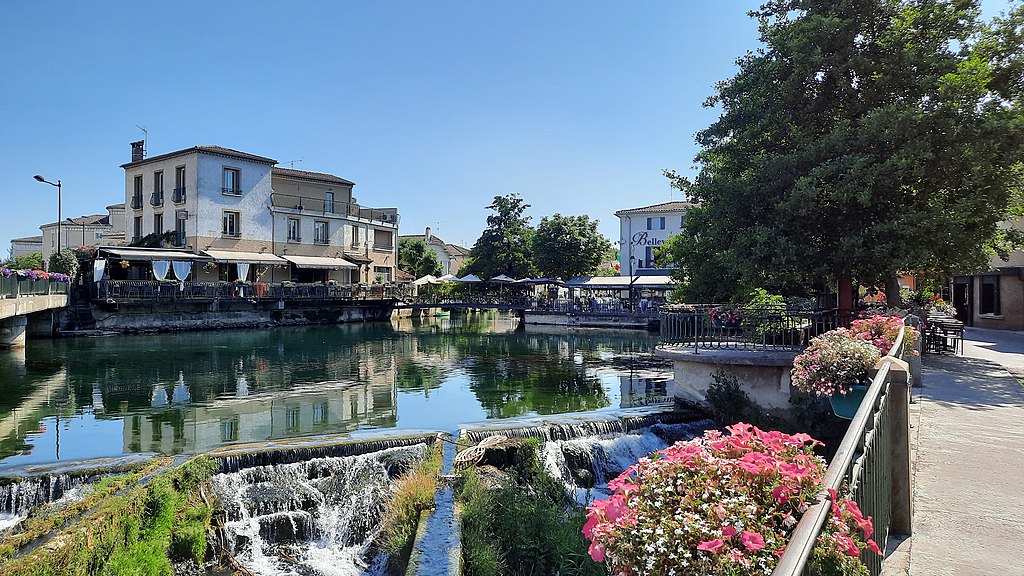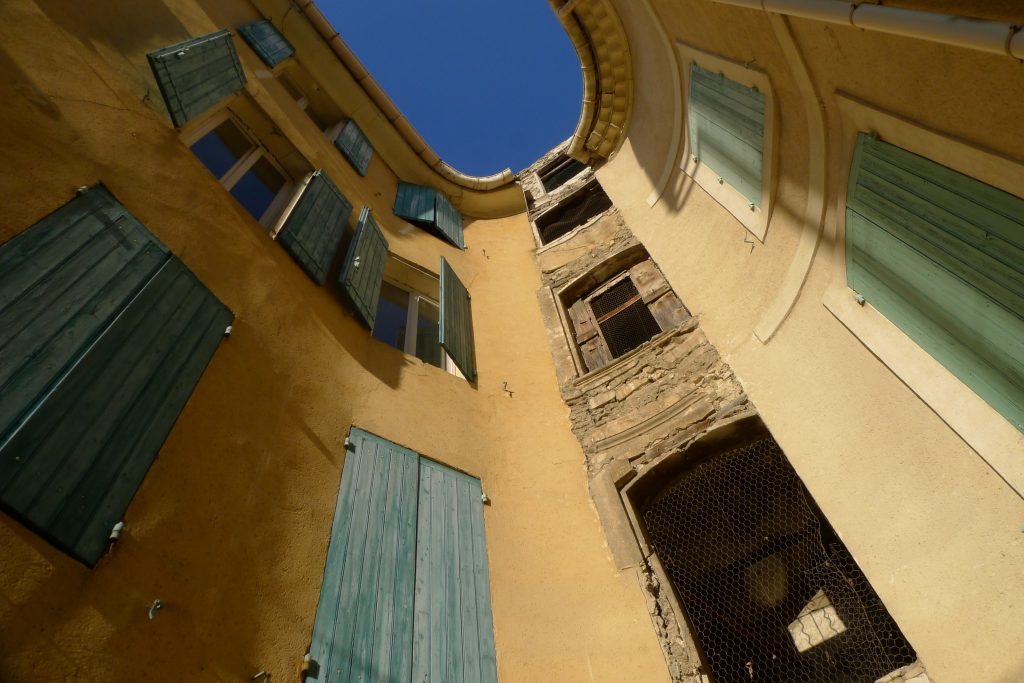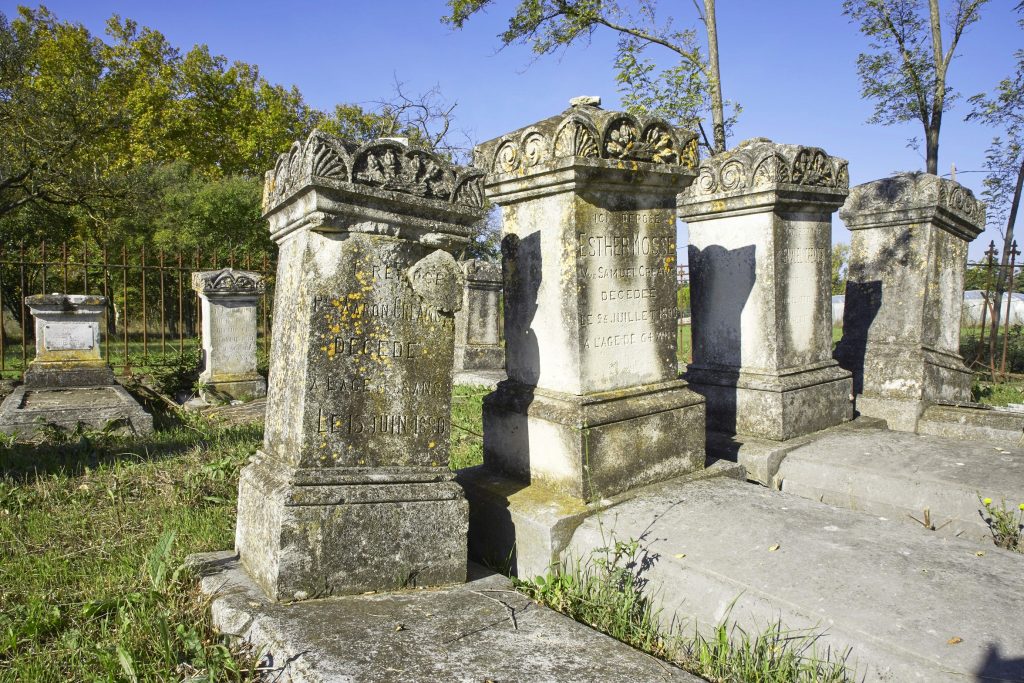The Jewish presence in L’Isle-sur-la-Sorgue is attested from 1278 onwards and most probably dates from much earlier. Several families lived in the Villefranche district, where the place de la Juiverie is located.

The Jews were then grouped together in quarries. This was the case until the French Revolution. The Jewish quarter of L’Isle-sur-la-Sorgue covers an area of 6,000 m², and in the 18th century was home to between 300 and 400 people.
Located in the southwest of the quarry, the synagogue appeared to date from the 16th century. According to research, its architecture resembled that of Cavaillon and Carpentras. Work has been carried out on the two-storey building several times over the years. The synagogue was abandoned and destroyed in the middle of the 19th century.
Today, there are two buildings dating from the 18th century that bear witness to the quarries of L’Isle-sur-la-Sorgue: the Carcassonne building, named after its owners, and the Beaucaire building. The latter was named for the same reasons, built between 1760 and 1765 by the brothers David-Aron and Isaac Beaucaire.
Many works have been undertaken in recent years to enhance the Jewish cultural heritage of L’Isle-sur-la-Sorgue. This includes the site of the Jewish quarter, the old synagogue, the Jewish cemetery and the Beaucaire building. The cemetery (located in the Bagnoles district, it was used until the dawn of the Second World War) and the building have been protected as historical monuments.
Interview with François Guyonnet, Director of Heritage at the Town Hall of L’Isle-sur-la-Sorgue
When did the Jewish presence in L’Isle-sur-la-Sorgue begin?
François Guyonnet : L’Isle-sur-la-Sorgue is a fairly recent town compared to its neighbours and was born around the year 1000, thanks to a natural hydraulic network. It expanded remarkably in the 12th and 13th centuries, becoming the second largest town after Avignon. It attracted a plethora of nobility and functioned with a particular system, that of the consulate between the nobles who managed the city.
The Jewish community was very present in the region at this time, but there is only one administrative mention of Isle in the 13th century, although it is highly probable that its presence is older. Following the political and religious events of the 13th and 14th centuries in the Comtat Venaissin, the Jews lived in quarries from the 15th to the end of the 18th century. It is true that many Jews lived in the vicinity of the place of worship, but before these quarries, there was no “Jewish quarter”, the populations mixing in the town. Many questions remain about the practice of this confinement, the closing of streets, the access to housing. From the 17th century onwards, things were to be clear-cut, as the pontifical authorities imposed the concentration of Jews in four towns in the region: Avignon, Carpentras, Cavaillon and Isle. This remained the case until the emancipation of 1791.

What traces of Jewish cultural heritage remain?
Unlike Cavaillon and Carpentras, we no longer have a synagogue since the end of the 18th century, which was abandoned and then demolished by the municipal authorities in 1856. Carpentras and Cavaillon still have their magnificent synagogues and Avignon rebuilt its own in the 19th century. L’Isle has an outdoor Jewish cemetery, located 2 km from the old centre, which is probably the result of a mutualisation with the neighbouring community.
My job as curator is to identify all the heritage and material traces of these Jewish communities. Of course, we no longer have a synagogue, but we have collective buildings from this 18th century Jewish community. The size of the Isle quarry is quite impressive for its time. It is estimated to have been about 6,000 square metres for a population that would have reached 400 people in the middle of the 18th century, living in buildings of several storeys. Two buildings today bear witness to the improved living conditions in the quarries in the 18th century resulting from the enrichment of various families: the Beaucaire building and the Carcassonne building, which adjoined the synagogue. Most of the other houses in the old Jewish quarter have fallen into ruin.
Three years ago, I seized the opportunity of a transfer of the Beaucaire building, so that we could position ourselves for its protection as a monument, effective since February 2022. This assured us of institutional funding from the State. We conducted an archaeological study, then bought part of the site in order to restore the historic staircase to its original function. It will serve private and social flats and on the top floor will be a space with an interpretation centre of the local Jewish heritage, which will probably be opened in 2024. Seeing this amazing staircase, images of the doors that opened to the old flats with the children running around and the daily life of the ghetto came to mind. It was very moving to save it.
Have you found the exact location of the old synagogue?
We know where it was thanks to the Napoleonic cadastre and topographical documents from the 19th century. Today, two-thirds of it is on public land, in a place with little traffic, a sort of anarchic car park in a corner of the Place de la Juiverie. The city council recently named the place where it was located Place de la Synagogue. This was my first step as a curator in this area. All this is done with the aim of enabling the local population to reconnect with this part of their history.
The other third of the old synagogue is located under the buildings constructed by the Abraham family, one of the last Jewish families in the Comtat, after the demolition of the place. They had recovered part of the land to build a stable. Recently, the owner wanted to build residential buildings there. I said to myself that if this transformation was authorised, there would no longer be any possibility of enhancing the value of the site. The town hall therefore decided to develop a qualitative project on the site of the synagogue. We bought the shed, and then archaeological research was undertaken. My idea is simple: after archaeological research, we could destroy the 19th century shed in order to open up a perspective on the Carcassonne building, which bears witness to the revival of the heritage of Jewish families in the 18th century. Ways will then be found to enhance this façade. On the site of the synagogue, we are working with a young architect on a qualitative project for the development of the public space. This will make it possible to visualise the plan of the synagogue and the remains that have been found. All of this will be done with an artistic dimension that will give a memorial function to the place and bring the synagogue back to life on the ground, which will thus find its place in the public space. The public space will also be enhanced by the former façade of the Jewish houses.

Do these projects to enhance the Jewish cultural heritage also concern the cemetery?
In 2013, an archaeological study was undertaken in the cemetery, which had been abandoned for a century. The graves were stripped and cleaned, and the enclosures were returned after being looted by thieves of ferrous materials. A clean-up with the University of Avignon and the DRAC enabled us to carry out a scan and a complete study of the cemetery. We have contacted a landscape gardener in order to consider a beautification project.
We are currently launching sponsorship campaigns to carry out these projects. Some of them are partly funded by local and national authorities, but we are still short of funds, especially for the synagogue project. The realisation of these three projects on the Beaucaire building, the synagogue and the cemetery will allow Jewish history to regain its important place in L’Isle-sur-la-Sorgue.